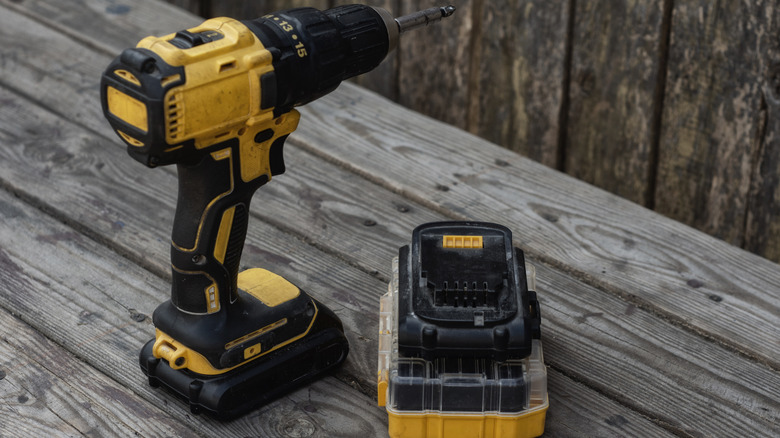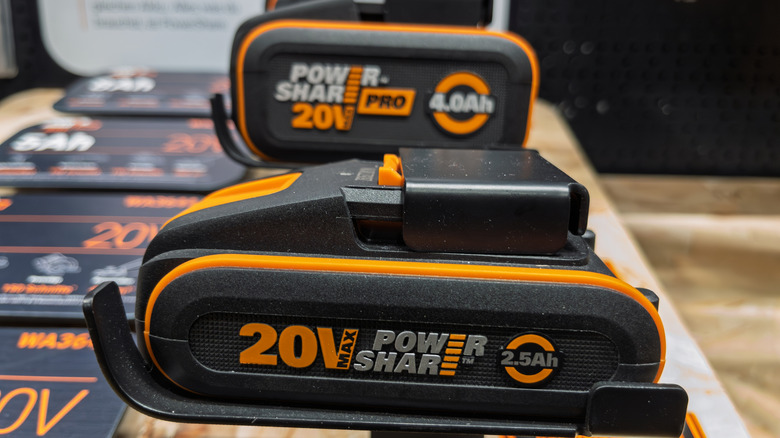The Common Storage Mistake That May Be Damaging Your Tool Batteries
Lithium-ion batteries have revolutionized power tools. While corded tools can still provide endless power that batteries can't, most projects around the home can be done with battery-powered tools. They're convenient, can be used anywhere, and modern batteries provide ample amounts of power to complete most jobs.
But batteries can only store a certain amount of energy. Let's say your cordless drill died just as you finished your last DIY project of the year. You think: "Why should I charge it up now when I won't need it until spring? Is there any harm in that?" Indeed, there is. You might end up with a dead battery.
Lithium-ion batteries — the type used in most power tools today — don't last forever. Over time, lithium-ion batteries lose some of their ability to retain a charge. They have a limited number of cycles, or times that they can be charged and discharged, varying anywhere between hundreds to thousands of cycles.
One common means of reducing the number of your battery's cycles is by fully discharging it. In short, the less you drain the battery, the longer it will last. Discharging your battery all the way can shorten the lifespan of a lithium-ion battery by half compared to discharging it down to a 40% state of charge.
Leaving your battery charging all winter isn't the answer either. You don't want to leave your cordless tools plugged in over the winter, as improper storage is one of the most common dangers of lithium-ion batteries. Leaving your tool plugged in and constantly charged at 100% can be a fire risk, which is why the National Fire Protection Association (NFPA) recommends you not keep charging your battery after it is fully charged.
Best practices for storing your cordless tools safely
If you want to avoid turning your power tool batteries into fire risks or doorstops, avoid running them down to zero, but charge them to no more than 80%. While you're using them, switch out and recharge your batteries long before they fully run out of juice.
For storage purposes, the best strategy is to charge your batteries to about 50%, then remove the batteries from your power tools. Keeping them in your tools means they will lose a small amount of charge over the winter, but if they start at 50%, the battery will not drain enough to dip to unsafe levels.
For safety purposes, the NFPA recommends you not charge your batteries in temperatures below 32 degrees or above 105 degrees Fahrenheit. Extreme temperatures force your charger to work too hard and can lead to a fire. For the same reason, use the charger that came with your power tool, rather than a universal battery charger.
Some companies make interchangeable batteries that work with their own brand of tools, but not with different brands. Different chargers can have different voltages, and different batteries can be charged at different voltages. Too much power sent into your batteries can damage the chemical makeup and, worse, cause them to overheat and catch fire. Too low a voltage can also result in not charging the battery all the way.
The good news is that battery chemistries are constantly improving, lowering both costs and risks. The gold standard in batteries — non-flammable solid-state batteries that charge more quickly and retain their charge longer — is right around the corner, and soon enough, your dilemma about charging and storing your batteries will be behind you.

